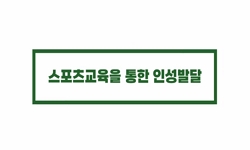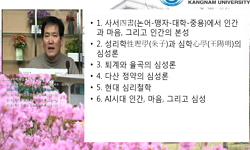강섬유보강 자기충전 콘크리트의 휨 성능을 평가하기 위하여 실험을 중심으로 한 연구를 수행하였다. 보 시험체를 만들기 위하여 3종류의 강섬유보강 콘크리트로 7개의 슬래브를 제작하였...
http://chineseinput.net/에서 pinyin(병음)방식으로 중국어를 변환할 수 있습니다.
변환된 중국어를 복사하여 사용하시면 됩니다.
- 中文 을 입력하시려면 zhongwen을 입력하시고 space를누르시면됩니다.
- 北京 을 입력하시려면 beijing을 입력하시고 space를 누르시면 됩니다.
부가정보
국문 초록 (Abstract)
강섬유보강 자기충전 콘크리트의 휨 성능을 평가하기 위하여 실험을 중심으로 한 연구를 수행하였다. 보 시험체를 만들기 위하여 3종류의 강섬유보강 콘크리트로 7개의 슬래브를 제작하였으며, 일정 기간 양생 후 다이아몬드 날이 달린 절단기로 슬래브를 절단하여 1개의 슬래브 당 5개의 보 시험체를 획득하였다. 각 보 시험체의 하중-처짐 곡선은 변위조절방식을 사용하여 구하였다. 실험 결과, 자기충전 콘크리트는 휨강도 및 연성, 인성지수 등 휨 성능을 평가하는 모든 부분에서 일반 콘크리트보다 양호한 성능을 보여주었다. 결과적으로 다짐이 필요없는 강섬유보강 자기충전 콘크리트는 강섬유보강 콘크리트의 가장 큰 단점인 시공성 저하 문제를 획기적으로 개선할 뿐만 아니라 역학적 성질도 양호하여 향후 토목․건축 분야에서 폭넓게 활용될 수 있을 것으로 생각된다.
다국어 초록 (Multilingual Abstract)
An experimental study was carried out to estimate the flexural performance of steel fiber- reinforced self-compacting concrete. Seven slabs with three different steel fiber-reinforced concretes were prepared to make beam specimens. After proper curing...
An experimental study was carried out to estimate the flexural performance of steel fiber- reinforced self-compacting concrete. Seven slabs with three different steel fiber-reinforced concretes were prepared to make beam specimens. After proper curing period, each slab was cut to five beams with a diamond saw. The beam specimen was tested with displacement control method to obtain load-deflection curve. As the results, the self-compacting concrete beam showed higher flexural strength, ductility and toughness index compared to the normal concrete beam. This means that steel fiber-reinforced self-compacting concrete can be used more widely in the field of architecture and civil engineering because of its self-compactability and good mechanical properties.
참고문헌 (Reference)
1 원종필, "하이브리드 섬유보강 콘크리트의 특성 및 적용" 18 (18): 22-27, 2006
2 강수태, "섬유의 방향성이 강섬유 보강 초고강도 콘크리트의 휨거동 특성에 미치는 영향" 한국콘크리트학회 20 (20): 731-739, 2008
3 최연왕, "고유동 콘크리트의 개발 및 활용" 20 (20): 1109-1112,
4 Vaxman, A., "Short-Fiber-Reinforced Thermoplastics: III. Effect of Fiber Length on Rheological Properties and Fiber Orientation" 10 : 45-461, 1989
5 Bui, V.K., "Rheology of Fiber Reinforced Cementitious Materials" RILEM Pubs. 221-231, 2003
6 Yu, A.B., "Porosity Calculation of Binary Mixtures of Non Spherical Particles" 76 (76): 2813-2816, 1993
7 Yu, A.B., "Packing of Ternary Mixtures of Non-Spherical Particles" 75 (75): 265-272, 1992
8 Han, K.T., "Numerical Simulation of Three-Dimensional Fiber Orientation in Short-Fiber-Reinforced Injection-Molded Parts" 12 : 366-371, 2002
9 Mobasher, B., "Microcracking in Fiber Reinforced Concrete" 20 : 665-676, 1990
10 Bentur, A., "Fiber-Reinforced Cementitious Materials" The American Ceramic Society 225-285, 1989
1 원종필, "하이브리드 섬유보강 콘크리트의 특성 및 적용" 18 (18): 22-27, 2006
2 강수태, "섬유의 방향성이 강섬유 보강 초고강도 콘크리트의 휨거동 특성에 미치는 영향" 한국콘크리트학회 20 (20): 731-739, 2008
3 최연왕, "고유동 콘크리트의 개발 및 활용" 20 (20): 1109-1112,
4 Vaxman, A., "Short-Fiber-Reinforced Thermoplastics: III. Effect of Fiber Length on Rheological Properties and Fiber Orientation" 10 : 45-461, 1989
5 Bui, V.K., "Rheology of Fiber Reinforced Cementitious Materials" RILEM Pubs. 221-231, 2003
6 Yu, A.B., "Porosity Calculation of Binary Mixtures of Non Spherical Particles" 76 (76): 2813-2816, 1993
7 Yu, A.B., "Packing of Ternary Mixtures of Non-Spherical Particles" 75 (75): 265-272, 1992
8 Han, K.T., "Numerical Simulation of Three-Dimensional Fiber Orientation in Short-Fiber-Reinforced Injection-Molded Parts" 12 : 366-371, 2002
9 Mobasher, B., "Microcracking in Fiber Reinforced Concrete" 20 : 665-676, 1990
10 Bentur, A., "Fiber-Reinforced Cementitious Materials" The American Ceramic Society 225-285, 1989
11 Corinaldesi, V., "Durable Fiber Reinforced Self-Compacting Concrete" 34 : 249-254, 2004
12 Naaman, A.E., "Characterization of High Performance Fiber Reinforced Cement Composites" 1-23, 1996
13 Kim, E.G., "A Study of Fiber Orientation during the Injection Molding of Fiber-Reinforced Polymeric Composites (Comparison between Image Processing Results and Numerical Simulation)" 124 : 366-371, 2002
14 Ferrara, L., "A Method for Mix-Design of Fiber-Reinforced Self-Compacting Concrete" 37 : 957-971, 2007
동일학술지(권/호) 다른 논문
-
- 한국구조물진단유지관리학회
- 김동준(Kim, Dong-Joon)
- 2009
- KCI등재
-
- 한국구조물진단유지관리학회
- 김규용(Kim, Gyu-Yong)
- 2009
- KCI등재
-
- 한국구조물진단유지관리학회
- 오강호(Oh, Kang-Ho)
- 2009
- KCI등재
-
- 한국구조물진단유지관리학회
- 정지승(Chung, Jee-Seung)
- 2009
- KCI등재
분석정보
인용정보 인용지수 설명보기
학술지 이력
| 연월일 | 이력구분 | 이력상세 | 등재구분 |
|---|---|---|---|
| 2027 | 평가예정 | 재인증평가 신청대상 (재인증) | |
| 2021-01-01 | 평가 | 등재학술지 유지 (재인증) |  |
| 2018-01-01 | 평가 | 등재학술지 유지 (등재유지) |  |
| 2015-01-01 | 평가 | 등재학술지 유지 (등재유지) |  |
| 2012-01-26 | 학회명변경 | 영문명 : Journal Of The Korea Institute For Structural Maintenance Inspection -> The Korea Institute For Structural Maintenance and Inspection |  |
| 2012-01-19 | 학술지명변경 | 한글명 : 구조물진단학회지 -> 한국구조물진단유지관리공학회 논문집외국어명 : Journal of The Korea Institute for Structural Maintenance Inspection -> Journal of The Korea Institute for Structural Maintenance and Inspection |  |
| 2011-01-01 | 평가 | 등재학술지 유지 (등재유지) |  |
| 2009-01-01 | 평가 | 등재학술지 유지 (등재유지) |  |
| 2007-08-13 | 학회명변경 | 한글명 : 한국구조물진단학회 -> 한국구조물진단유지관리공학회 |  |
| 2007-04-11 | 학회명변경 | 한글명 : (사)한국구조물진단학회 -> 한국구조물진단학회 |  |
| 2007-01-01 | 평가 | 등재학술지 유지 (등재유지) |  |
| 2004-01-01 | 평가 | 등재학술지 선정 (등재후보2차) |  |
| 2003-01-01 | 평가 | 등재후보 1차 PASS (등재후보1차) |  |
| 2001-07-01 | 평가 | 등재후보학술지 선정 (신규평가) |  |
학술지 인용정보
| 기준연도 | WOS-KCI 통합IF(2년) | KCIF(2년) | KCIF(3년) |
|---|---|---|---|
| 2016 | 0.36 | 0.36 | 0.31 |
| KCIF(4년) | KCIF(5년) | 중심성지수(3년) | 즉시성지수 |
| 0.28 | 0.27 | 0.496 | 0.13 |




 ScienceON
ScienceON 스콜라
스콜라






